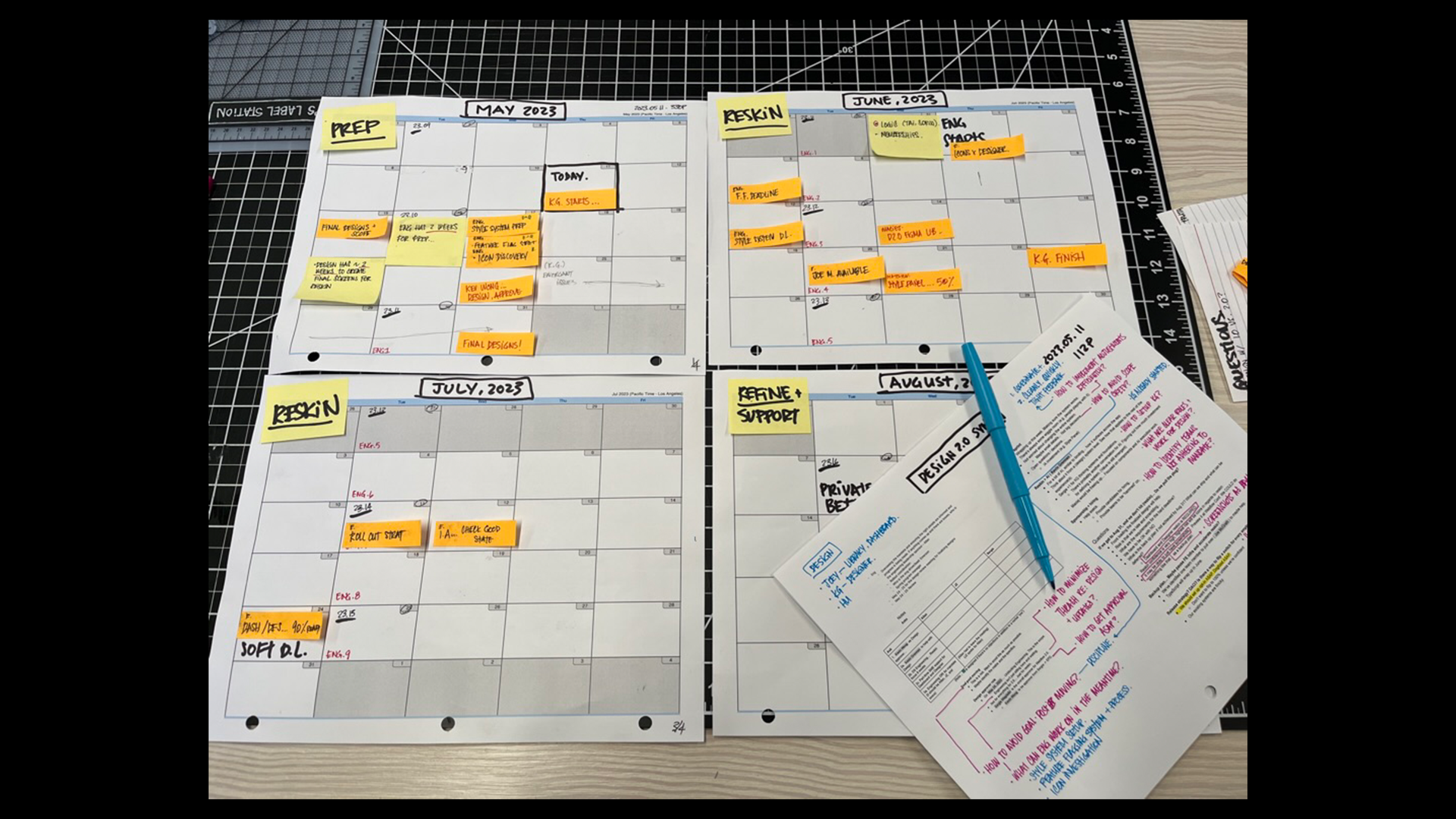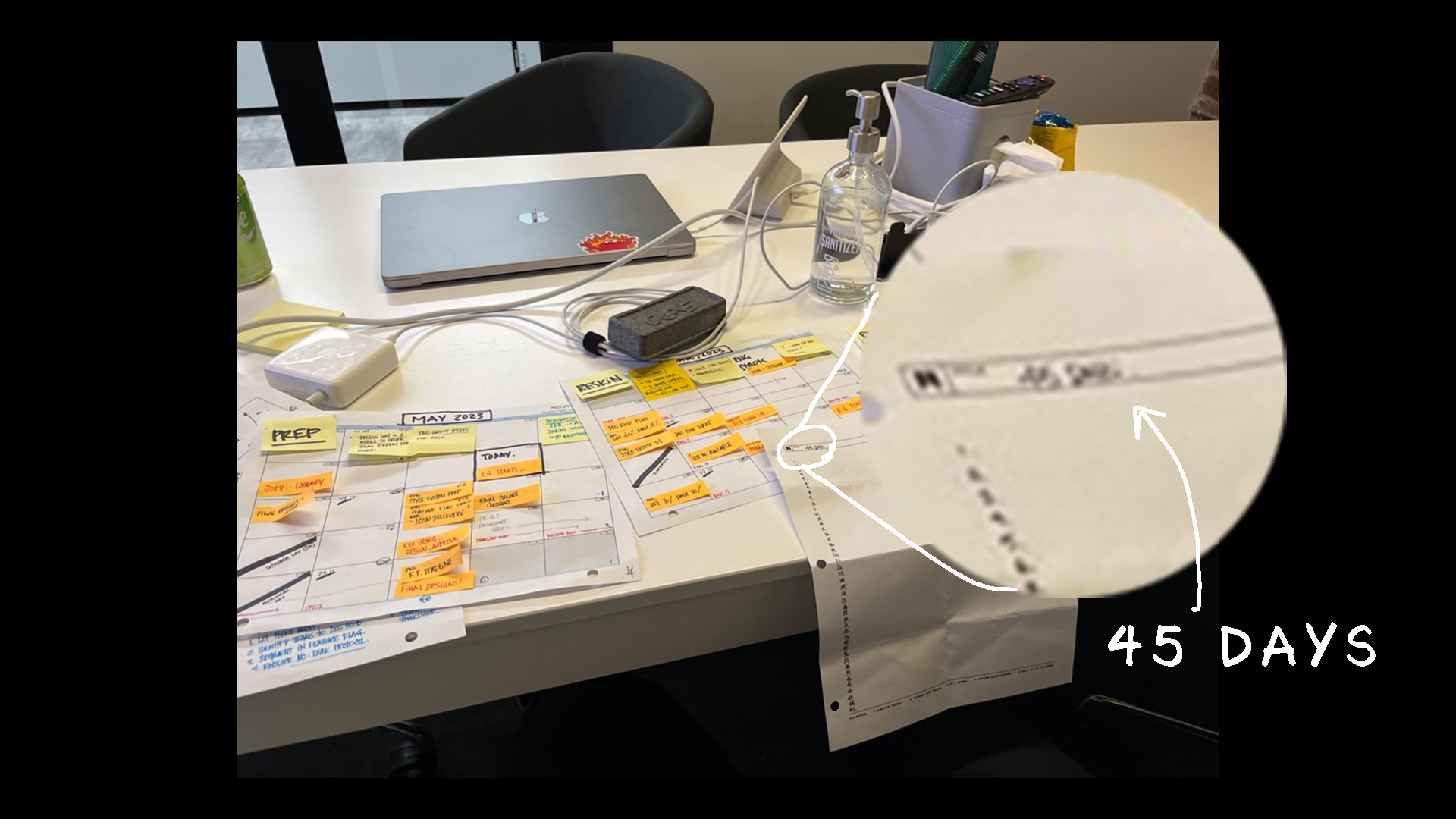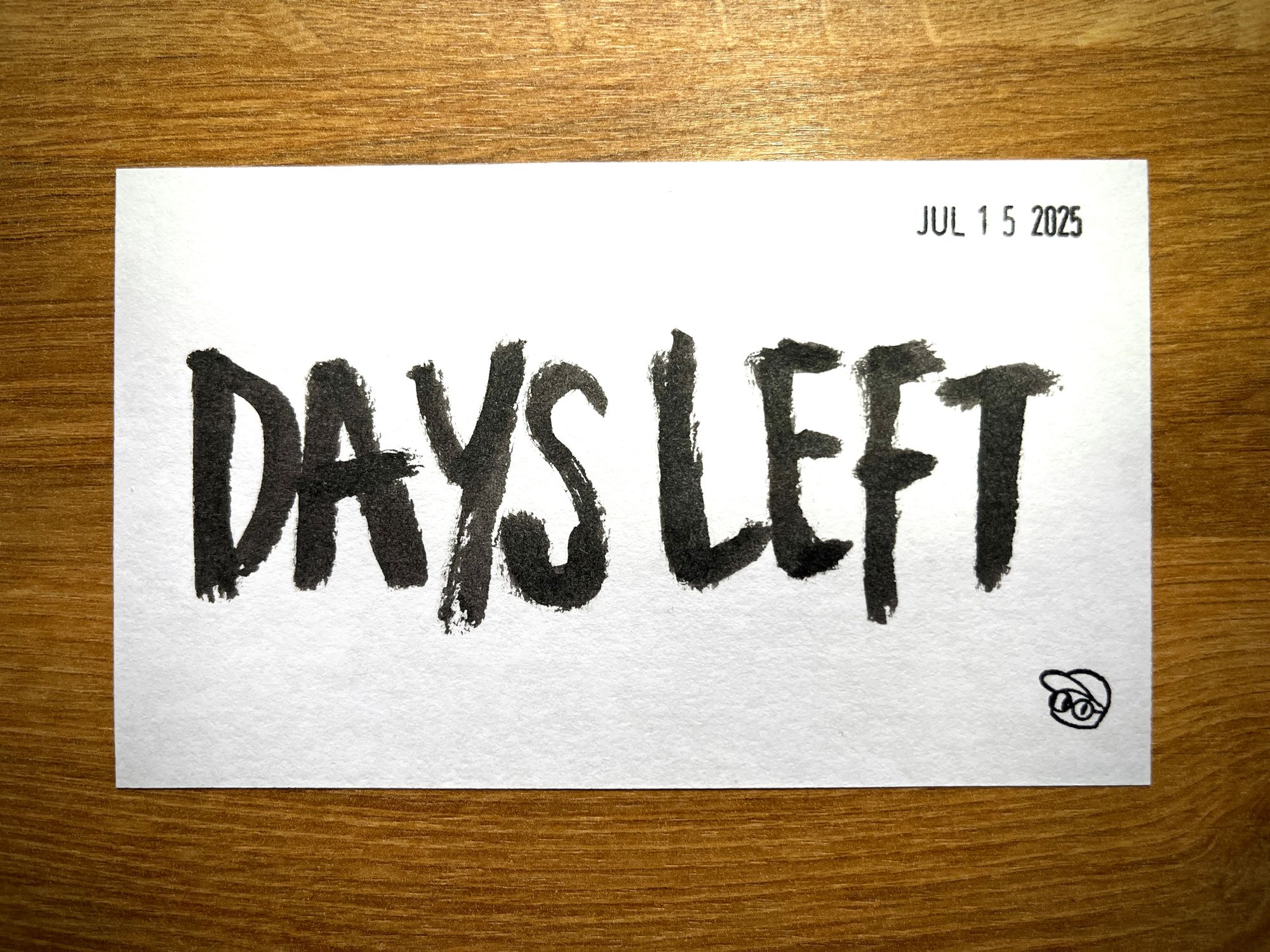There’s a moment in every project when reality quietly walks into the room and sits down across from you.
No calendar invite. No Slack ping. No loud entrance.
Just that slow, steady presence that says:
“Hey… You don’t have as much time as you think.”
And you look up from the Figma file, or the spec doc, or the kickoff deck… and you finally ask yourself:
“Wait… How many days do we actually have to do this?”
That’s what today’s post is about.
The shift from calendar-time fantasy to work-day reality. And once you see that? You can’t unsee it.
The Mission
In 2023, I led Webflow’s rebrand—a massive overhaul of both the Designer and Dashboard surfaces.
That meant refreshing every pixel of every screen, panel, and pane across multiple surfaces. It meant coordinating with multiple teams across the entire org. And it meant doing it all without blocking any projects already in flight.
All in… about 5 months.
During planning, I knew I couldn’t waste time in endless speculation. I had to get moving. Fast. With precision.
That meant getting serious about volume:
- How many components needed to be touched?
- How many CSS variables needed to be wrangled?
- How many cross-team dependencies needed to me managed?
- How much capacity did my core team actually have?
But the biggest question...
How much time did we really have to get this done?
The Calendar
One of the first things I did was print out physical calendar pages. May through August. (We didn’t know it yet, but we’d get a little of September too.)
I laid the pages down. Marked up every PTO. Slapped on sticky notes. Scribbled, scratched, and circled things. Traced timelines with my finger.

I needed to see the days. I needed to feel the days. Because digital tools are great, but they can be deceptive.
You don’t feel the rhythm of time through a product spec. You do feel it when you’re walking through a calendar and counting the beats.
The Count
With calendars in front of me, I began to count.
I counted every working day—Monday through Friday—for each individual core team member. (I had to go person by person, since everyone’s PTO was different.)
Then I subtracted 5 days from each count. For the unexpected (sick days, bad days, buffer days).
Then I shaved off more to account for heavy meeting days. Slower ramps. Code freezes.
Then I averaged the numbers across the whole team. The result?
45 days.

Five months of calendar time collapsed into 45 true working days. It was a gut-check moment. But it was also clarifying.
Because 5 months sounds cozy. But 45 days? That number wakes you up. It snaps you out of fantasy mode and into focus.
Because now you’re not planning in “maybe.” You’re planning in math.
The Constraints
Another reason I wanted to be so precise with the workday count was to avoid taking on anything that wasn’t absolutely necessary.
This was a high-pressure, high-ambition project. The team was nervous. Honestly, I think everyone was nervous. There was so much to do—and so little time to do it.
But from the very beginning, I made one thing clear to the core team:
No crunching.
I didn’t expect anyone to continuously pull 14-hour days. Everything we did should fit into a regular 9–5 schedule.
It’s not designed to push you to the limit. It’s designed to respect your limits from the start. And that’s why the count mattered. We had to be smart. We had to be real. So we could focus on what mattered—and let go of what didn’t.
The Wake Up
Since then, I’ve used the same technique across multiple big projects—
From AI Site Builder to Interactions with GSAP.
It doesn’t take long. And it’s surprisingly powerful.
- Print out your monthly calendars (or use something like Figjam).
- Mark the start.
- Mark the deadline.
- Block out every PTO and holiday.
- Note all-team/company meeting days.
- Note code-freezes.
- Subtract some days.
Now count what’s left.
That number? That’s your real runway. That’s the difference between vague ambition and focused movement. Between planning for comfort… and planning for truth.
Because when you count the days, you start making every day count.
Having a realistic day count will wake you up. It’ll make you move. Because 45 days clears your sinuses a whole lot faster than “5 months” ever will.
